It is universally accepted that the discovery of the Cape of Good Hope route to Asia in A. D. 1498 brought about a maritime revolution with far-reaching political, economic and even cultural results, which were perhaps unprecedented in the history of this region. India was exposed for the first time directly to Europe, and soon she became a centre of attention for the latter.
In view of the fact that Vasco da Gama was Portuguese and the initial European settlements in India since A. D. 1498 were Portuguese ones, it was quite natural for the Indians to look at Europe for some time in the light of their experiences with the former. As we know, this experience was bitter, especially for the Muslims of the Malabar region, whose experiences were reflected about a century later (A. D. 1583) in the depressing comments of Zainud Din:
The Muslims of Malibar lived a happy and prosperous life on account of the benevolence of their rulers... But the Muslims undervalued the blessings of Allah, and transgressed and disobeyed. So Allah set on them the people of Portugal, who were Christians. They oppressed the Muslims, corrupted them and committed all kinds of ugly and infamous deeds, too bad to be described... They prevented the Muslims from their journeys, especially their pilgrimage to Mekka. They plundered their properties, burnt their cities and mosques, seized their ships and tore down the Qur'an... They beat the Muslims with shoes... tortured the Muslims with fire, and kept some as slaves and employed some of them for all kinds of hard labour without any compassion.
Nevertheless, in the midst of political chicanery and military brutalities from every side, a significant economic and cultural impact had started, operating simultaneously in both a discreet and obvious way.
It was a historical accident that while Vasco da Gama went to India in A. D. 1498, Babur defeated Ibrahim Lodi, the Afghan King in North India in A. D. 1526. If on the one hand, Goa became the centre of Portuguese power in Asia, Agra, Fathpur Sikri and Delhi acquired the distinction of being the capitals of the Mughal Empire on different occasions. The latter was firmly consolidated by Akbar, the grandson of Babur, who ascended the throne in A. D. 1556. In fact, it was during Akbar's reign that meaningful contacts were established with the Portuguese.
Of all the contemporary Persian sources, Abul Fazl's Akbarnama and Badauni's Muntakhab-ut Tawarikh took notice of the Portuguese at the Mughal Court. Apart from literary evidence, we also possess non-verbal documents of the Mughal period in the form of paintings.
The Mughal School that originated and developed during Akbar's forty-nine year rule furnishes a variety of information on the numerous aspects of the Mughals - political, social, technological and even on flora and fauna. No wonder, then, that the presence of the Portuguese in India - whether in general or at the Court, was recorded in the paintings. One reason for such depictions was the practice of manuscript illustration at the Mughal atelier that provided an opportunity for the artists to illutrate selected episodes in the text of chronicles or other Persian works. Another form was separate and individual paintings, without forming a part of the text.
For our present study, we have collected ten paintings of both kinds related to the proposed theme, that is, the Portuguese in general (or secular) and the Jesuit priests from Goa.
We know from Abul Fazl that a Portuguese delegation from Goa (jama'i Kasir nisara az bandar Goa) attended the Court (mulazamat) in A. D. 1573 at Surat in Gujarat. The name of the leader of this delegation is not mentioned, but Abul Fazl considered him as an ilchi (envoy) from Goa. However, the Jesuit accounts tell us that the delegation was led by António Cabral. Abul Fazl adds that Akbar enquired from them about the novelties ('ajaib o ghara'ib) of their country and also about the 'life-styles' (auza'i farang) of Europe. It is interesting to learn, as Abul Fazl remarks, that Akbar thought that their meeting with him would have a 'civilizing' influence upon that 'wild race' (giroh wahshi). But this was a premature judgement.
The next mention that we get in the Akbarnama is that of Pedro Tavares whom Abul Fazl calls Pratap Tar Farangi. He was the commandant of Satgaon, a Portuguese settlement in Bengal. Abul Fazl praises his propriety, wisdom and graceful manners and says that he was one of the chief merchants of Bengal (a'iyani bazarganan bandar Bangala). Tavares met Akbar in A. D. 1577 with his wife. In A. D. 1578, Tavares sent Julian Pereira, a priest in charge of Satgaon, to Fathpur Sikri, the then capital of the Mughals. Perhaps he was not a Jesuit priest, although two had already arrived in Bengal in A. D. 1576. He could not have been an Augustinian since the latter are reported to have come to Bengal very late in A. D. 1596. At any rate, Pereira suggested that the Emperor should invite Jesuit priests from Goa to quench his thirst for knowledge about Christianity. Consequently, Dominic Pires, an Armenian Christian, was sent to Goa in A. D. 1579 with a letter inviting Jesuit priests to the Mughal Court. This was a far cry from Akbar's earlier judgement in A. D. 1573, when he called the Portuguese of Goa a 'wild race' who 'needed civilizing.'
Subsequently, three Jesuit Missions went to Akbar's Court at Fathpur Sikri and Lahore in different years from A. D. 1580 to 1596. But only the first one has been taken note of by the Mughal painters. Before we take up this non-verbal document, it is pernitent to examine the background.
A 'House of Worship' (ibadat khana) was constructed in A. D. 1575 on Akbar's order at Fathpur Sikri. This was a result of his intellectual proclivities and his growing interest in religious matters at a philosophical level. He wanted to know the truths of all the faiths (haqiqat adyan o malal) and desired to subject the arguments and evidence (dala'il o burahin) of every religion to critical analysis (tanqih). Abul Fazl attributes the following statement to Akbar:
Not a single step should be taken without the flaming-torch (mash 'al) of proof. And that faith is good which is in consonance with wisdom (khirad).
Thus, Reason was to be sole arbiter of things religious. Badauni was aware of this principle enunciated by Akbar when he disapprovingly commented that for the Emperor, faith must be founded on wisdom ('aql) and not on tradition (naql).
Initially, Akbar invited Muslim intellectuals ('ulema) of diverse sects to the 'ibadat khana on Friday nights for discussions on Islamic tenets. Very soon, Hindus, Jains, Zoroastrians and others were welcomed by the Emperor to present the main features of their beliefs. It was in A. D. 1580, as mentioned above, that the first Jesuit Mission from Goa arrived at Fathpur Sikri. Its leader was Father Rudolf Aquaviva who was accompanied by Francis Henriquez and Antony Monserrate. Badauni does not give any names, but he makes a general statement that the visits of the farangis (amad o raft farangian) to the Court resulted in the appreciation of some of their rational beliefs (i'taqadiyati 'aqli). At another place, he uses the term padri for the 'disciplined wisemen' (danayani martaz) of Europe (mulk Afranj) whose head was papa (the Pope) whom he calls mujtahid kamil (infallible authority). However, Abul Fazl refers to Father Aquaviva as 'Padri Rudolf', and hails him as one of the Christian intellectuals incomparable in comprehension and sagacity (ba fahm o fitrat).
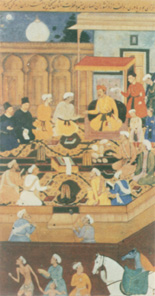 Plate I: Reproduced from Arnold and Wilkinson (see note 8), pl. 36.
Plate I: Reproduced from Arnold and Wilkinson (see note 8), pl. 36.
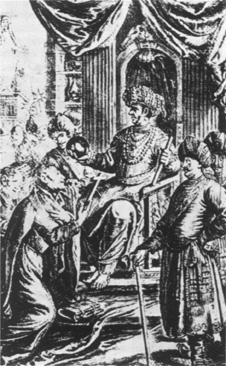 Plate II: Dalu Jones (note 16), pl. 1.
Plate II: Dalu Jones (note 16), pl. 1.
One Mughal artist has illustrated this visit of the first Jesuit Mission narrated in the Akbarnama text which was prepared for the Imperial Library (Pl. I). One line from the text mentions 'Padri Rudolf', which has been inscribed at the top of this composition in accordance with the practice of the Mughal book-illustration. The painting purports to show a part of the 'ibadat khana with the Mughal Emperor in the company of Muslim scholars and two Jesuit priests. The latter are shown in their conventional dress with the distinctive cap and long gowns. That it is night is suggested by the moon in the far left corner at the top and also by the three candle-shades on the floor. We can also see a flaming torch in the hands of an attendant. Books are exhibited, either lying on the floor by the side of the participants in the debate, or in their hands, obviously meant for citation as proof of their respective beliefs. The hands of some of them are slightly raised in a gesture of making a point.
It is inexplicable why only two instead of three priests have been depicted. At any rate, one figure with a beard, near the left margin, is likely to be Aquaviva. This can be compared with a European painting of a similar theme (Pl. II) where the Father has been shown holding a small cross before Akbar, while a bound book (perhaps a copy of the Gospel) is on the floor.
The issues in debates between the Muslim 'ulema and the Jesuit priests in the 'ibadat khana are reminiscent of such disputations in the past between the Muslims and Christians: the question of the Trinity (salis salasa), Jesus being the Son of God, distortion of the Bible (tahrif Injil), etc. It is possible that Plate I displays the latter debate described by Abul Fazl in the context of the challenge given by Father Aquaviva to the Muslims to test the truthfulness of their holy Scriptures. This was to be done by an ordeal of fire (khirmani atish), the Muslims holding the Qur'an and the Jesuits the Gospels in their hands, so that whoever passed through the fire unharmed would be establishing the genuinness (haqq tarazi) of Scriptures. From Abul Fazl's account it appears that Akbar expected the Muslims 'ulema to accept this trial by fire. But it was avoided, which incensed the Emperor. It is quite remarkable that Akbar did not permit such discussions between the Hindu and Muslim intellectuals, although he goaded the Muslim sects to lock their horns among themselves. For Jahangir's period, we have for the present collected three paintings that reveal the presence of Jesuit priests, one in each composition. The first one (Pl. III), done by Abul Hasan, records the coronation procession of Jahangir in A. D. 1605-6. The priest is easily visible near the middle of the painting, and to the left of the hind legs of a horse. He is in full priestly robe similar to that in Pl. I, holding a book, perhaps the Gospel, in his raised right hand. The second one (Pl. IV) shows a Jesuit priest near the left margin. This composition records the visit of the Emperor to the mausoleum of Khwaja Muinuddin Chisti, a much-venerated saint of early medieval India, at Ajmer. The buildings with the domes stand out in the background. The third painting (Pl. V) exhibits Jahangir's court along with the nobles, three young princes, attendants, a horse and one elephant. A Jesuit priest can be seen standing on the left side of the elephant. What is strange is that the presence of Jesuits at the Court or in the Emperor's camp is not mentioned at all in Jahangir's memoirs (Tuzuk-i Jahangiri or Jahangirnama); nor do the contemporary Persian sources hint at it. For that matter, Jahangir does not even refer to the embassy of Sir Thomas Roe at his court!
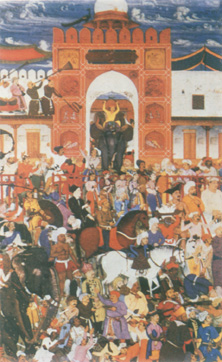 Plate III: Ivanova, et al. (note 10), pl. 7.
Plate III: Ivanova, et al. (note 10), pl. 7.
Who were these three Jesuit priests? We know that no official Mission came from Goa to Jahangir's court as this happened during Akbar's reign. However, the third and the last Mission that came to the latter's court under the leadership of Father Jerome Xavier and Emmanuel Pinheiro in A. D. 1595-96, continued after Akbar's death and, as Maclagan says, the 'personnel only was gradually changed' during Jahangir's reign. For example, both the Fathers left Jahangir's court around A. D. 1614-15, but other Jesuits joined the Mission. Two of them were Fathers Francis Corsi and Joseph de Castro. The first came to India in A. D. 1599, worked at Lahore in A. D. 1600 with Pinheiro and later joined Father Xavier at Agra in A. D. 1604. Henceforth, for a long time, Corsi remained with Jahangir and accompanied him to many places till A. D. 1624 when he left the court to be replaced by Father Castro. That individual priests presented themselves before Jahangir is substantiated by Jesuit accounts; on the other hand, paintings, too, offer information in this respect. But is it possible to identify them?
We first take up Pl. V., Maclagan suggests, without evidence that the priest in the painting might be Father Corsi. The latter was of 'small stature' which persuaded Jahangir not to ask him questions about his faith under the impression that he might be 'as short in wit as in stature'. But the stature cannot be determined from the portrait in the painting. S. C. Welch says that his name is shown in an inscription. The inscription is on the left collar of the figure, but only the word padri in Persian can be deciphered in the reproduction. The crucial task is to establish the date of the painting. Before we do so, we must point out the depiction of Prince Khurram (Shah Jahan) standing near the throne, and the latter's son Sultan Shuja' also, who occupies the space between his father and grandfather (Jahangir). That the little prince is Shuja' is proved by the inscription on his dress where he is named. Now, if the picture of the priest is that of Corsi, then the composition must have been completed before A. D. 1624 when he left the court. The presence of Shah Jahan will push the date back to A. D. 1621 since he rebelled in A. D. 1622 and never met his father again. Moreover, the age of Sultan Shuja' may help us in fixing the date of the painting. Welch thinks that he was four years old at the date of completion of the painting. If this view is accepted, the date must be A. D. 1620 since Shuja' was born in A. D. 1616. In A. D. 1620, Jahangir was in Kashmir when Shuja' fell headlong from a height of about ten yards through an open window of the palace building where he was playing. The little prince somehow survived the fall which elicited Jahangir's remark that how could a child of four years of age fall from such a height and yet escape from any harm to his limbs. Thus it is possible that the composition was done in A. D. 1620, and Corsi is reported to have followed the Emperor till A. D. 1624.
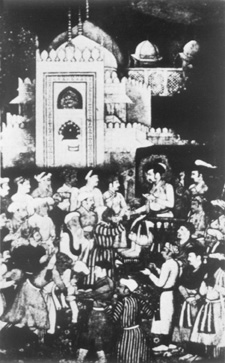 Plate IV: A. K. Das (note 18), pl. 44.
Plate IV: A. K. Das (note 18), pl. 44.
Plate IV purports to record Jahangir's visit to the tomb of Khwaja Mui 'Muddin Chisti at Ajmer. This event occurred in the eighth regal year of Jahangir, that is, in A. D. 1613-14. The Emperor writes in his memoirs that when he saw the shrine of the saint from a distance of a Kos (about two miles), he travelled the rest of the road on foot. This fact is demonstrated in the painting where he is shown occupying a chairthrone: no horses, elephants or palanquins are in sight. A Jesuit priest can be seen in the left bottom margin. We learn from the Jesuit accounts that Father Corsi accompanied Jahangir to Ajmer in A. D. 1614. The only difficulty is the slight facial dissimilarity in the portrayal of the priest compared to plates III and V, since the face is not lean and thin in these latter paintings as in Pl. IV. But this discrepancy might be explained away as artistic aberration: at least the beard is all the portraits (in contrast, Father Castro had a beard).
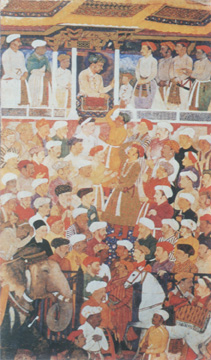 Plate V: S. C. Welch (note 15), pl. 17.
Plate V: S. C. Welch (note 15), pl. 17.
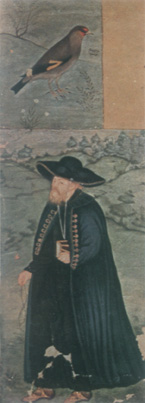 Plate VI: Enc. of World Art (note 19), pl. 121.
Plate VI: Enc. of World Art (note 19), pl. 121.
The third painting in this group (Pl. III), not available to Maclagan, must have been a double-page composition, but only one part is available to us. Fortunately, this part shows a Jesuit priest by the side of the hind legs of the brown horse. He is holding a book (definitely the Gospel) in his right hand. The scene pertains to the coronation ceremony of Jahangir which is testified to by the inscriptions on the brown stone panel (and also beneath it) at the top of the large gateway through which a huge elephant is shown coming out. The inscribed date is A. D. 1014 corresponding to A. D. 1605-06 when Jahangir was crowned. We have mentioned earlier that Corsi came to Agra in A. D. 1604 and joined Father Jerome Xavier, the leader of the third Jesuit Mission at Akbar's Court. It is no accident, then, that the face of the figure resembles that of Corsi in Pl. V.
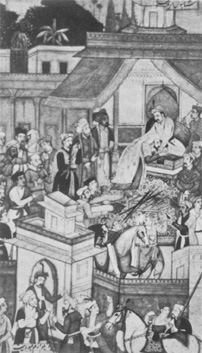
Plate VII: Arnold and Wikinson (note 8), pl. 23.
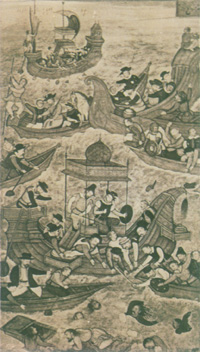
Plate VIII: F. R. Martin (note. 17), pl. 183 (on the right side)
Our Plate VI is unique insofar as Jesuits are concerned: it is a full 'close-up' portrayal in priestly blue apparel. The figure is wearing a European hat, and two books in his left hand close to his body, and holding a rosary in his right hand. The beard is full and flourishing, turning a little greyish. This standing portrait with the Agra-Fathpur Sikri hilly background seems authentic: it must have been drawn from some live model. Who is he? The answer depends partially on the date of the execution of this composition. But there is no certain way to establish this. The fact that a drawing of a bird by Mansur (of Jahangir's court) has been pasted over the top of the portrait does not help us because the pasting might have been done in modern times. On the other hand, the emphasis during Akbar's reign was more on book-illustration than individual portraits. Even Akbar's portrait are few and far between. An authentic individual portrait of a European does not seem to be likely in Akbar's times since we do not have any. Copies from European engravings and paintings are a different proposition. We can only suggest that perhaps this portrait might belong to Jahangir's period and the figure might be identified as that of Father Jerome Xavier, who entered the Society of Jesus twenty-six years previous to his visit to Akbar's Court. Since he was born in A. D. 1549, he must have been forty-six years old when he came to Agra. Maclagan says that he was 'an earnest man of mature age' at this time. Father Xavier remained at the Mughal court, including Jahangir's, for about twenty-three years and finally left for Goa in A. D. 1617 where he died in the same year. There are, then, two possibilities: a) this painting was completed before Akbar's death, say in A. D. 1604 when Xavier should have been fifty-five years old; or b) it was done during Jahangir's reign before A. D. 1614 because the priests at Agra were in trouble in that year at the hands of the Mughal authorities. That the portrait cannot be that of Father Rudolf Aquaviva is obvious from the great dissimilarity of their respective beards (see Pl. I).
Besides the Jesuit priests, we have one example of a 'lay Brother' that has gone unnoticed so far. This is from an illustration in the Akbarnama. The occasion is the birth of Akbar's son, Sultan Murad, and the happy news is being conveyed to him (Pl. VII). Towards the left margin within the enclosure, we can observe a European with high collars and a priestly robe. He is shown sporting a bread and long moustachios. His head is uncovered, and he is holding a book (most probably the Bible) in his half-raised left hand. It is not possible to identify this figure since there are no hints in the painting nor do we get any help from literary sources. Another European figure is visible in Pl. III (Jahangir's coronation). He is depicted watching the procession from the other side of the fence, near the right pillar of the high gateway. Could he, too, be taken as a 'lay Brother'? It is difficult to guess since only his head and neck can be seen.
Now let us turn to the depiction of secular Portuguese. We have selected three compositions in this respect. Chronologically, we first take up Pl. VIII which displays one well-known incident in the Indo-Portuguese history that happened in A. D. 1536 near the coastal region of Gujarat - the drowning of Sultan Bahadur Shah, the ruler of Gujarat. The story of this perhaps unintended tragedy has been preserved with slight variations in both the Portuguese and Persian sources. Briefly stated, Humayun, the Mughal emperor and the father of Akbar, overran the kingdom of Gujarat in A. D. 1536 and occupied the capital Champaner. Bahadur Shah turned to the Portuguese in desperation for help against the Mughals in exchange for giving them permission to construct a fortress at the port of Diu, including other concessions. The port of Bassien, too, was surrendered to the Portuguese. However, the latter's military assistance was not only inadequate but also half-hearted. Actually, Bahadur Shah recovered his territories later in A. D. 1536 from the Mughals on his own. Meanwhile, the Portuguese under Nuno de Cunha, the governor of Diu, started giving trouble to Bahadur Shah by acting beyond the constraints of the treaty. For example, once his own ship was not allowed to leave the port. With a view to sorting out matters, Bahadur Shah visited the governor aboard the latter's ship, but smelling foul play he hurriedly left the ship and took his own boat towards the shore. His boat was pursued by the Portuguese and eventually overtaken, leading to mutual assaults with casualities on both sides. In the fighting, Bahadur Shah was wounded, and he jumped out of the boat intending to reach the coast by swimming. But, while still in the sea, he received several blows from the Portuguese till he died and finally met his watery grave. Pl. VIII seeks to capture this episode. We can see Portuguese ships of various sizes full of soldiers and officers aboard. Bahadur Shah has been depicted in the foreground being struck by the Portuguese aboard the vessels on his right. Portrayal of the Portuguese ships and the dress of their occupants are remarkably authentic.
Another composition (Pl. IX) showing naval battle between the Mughal forces and the Portuguese is from the Shahjahannama (A. D. 1657) illustrated during Shah Jahan's reign. The date of this encounter is A. D. 1632, and the place of its occurrence is the port of Hugli in Bengal. The account of this confrontation given in the Persian sources is not very different from what the Jesuit and non-Jesuit European versions tell us. The story begins with the coming of some Portuguese merchants from Ceylon to the port of Satgaon in Bengal (A. D. 1537). During the course of time they acquired some territory away from Satgaon and constructed strong houses fortified with cannons, etc. This was the origin of Hugli (bandar Hugli). Portuguese control later extended over the villages in the vicinity of the port and, according to the Persian sources, they paid only a nominal rent to the government of Bengal. Hemier informs us that the Hugli Portuguese were in league with the European settlers of Chittagong who were mostly Portuguese - both full-blooded and half-castes with a sprinkling of 'other Franks collected from various part of the world'. These settlers were patronised by the King of Arakan or Magh in Assam who 'lived under perpetual dread of the Mogol' and, therefore, he kept these foreigners, as a species of advanced guard, for the protection of his frontier. Bernier accuses these Portuguese settlers of Chittagong of ravaging the villages, often penetrating forty or fifty leagues up country, surprising and carrying away the entire population of villages on market days, and at times when the inhabitants were assembled for the celebration of a marriage, or some other festival. The kidnapped ones were made slaves and offered for sale to the Portuguese of Goa, Ceylon, San Thomé and other places; even the Hugli settlers purchased them without scruples - 'whole cargoes at a cheap rate'. But Persian sources do not differentiate between the Portguese of the two settlements: they lay all blame at the door of the Hugli Portuguese alone. The latter were also indicted for converting their captives to Christianity, partly by force and partly by persuasion. Bernier, too, records the latter accusation and reproduces their boast that they make more Christians in a twelve-month than all the missionaries of the Indies do in ten years. He strongly condemns their conduct saying, A strange mode, this, of propagating our holy religion by the constant violation of its most sacred precepts, and by the open contempt and defiance of its most awful sanctions. Shah Jahan was unhappy with the Portuguese of Hugli because they had not supported him when he was in Bengal after rebelling against his father. Moreover, other sources tell us that the immediate cause for the Mughal military action against the Hugli settlers was the capture of some Mughal ladies by the Portuguese in Bengal. To cite Bernier again, they provoked his displeasure by their refusal to release the numerous slaves in their service, who had all been subjects of the Mogol.
Thus, the Mughal assault on Hugli was a result of many factors. We do not propose here to go into the details of the battle strategy. One thing is, however, certain: this was a combined land and naval engagement. Some highlights of the siege of Hugli and the eventual battle, which continued for three and a half months, are faithfully portrayed in Pl. IX. Mining was one of the strategies the Mughals resorted to in this confrontation. This is depicted in the huge gunpowder explosion in the distant background at the top of the left part of the painting in which, as the Persian sources say, hosts of heretics were blown up in the sky. The Augustinian church is also visible in the composition, dwarfed by the mushroom explosion. Houses built in European style can also be seen, giving a glimpse of the Hugli settlement. Portuguese ships with soldiers aboard, too, have been depicted, one of which has already sunk along with the 'Franks'. The Mughal war vessels are on the left side, along with sailors and gunners. Four Mughal field-pieces are exhibited on the shore, directed towards the Portuguese: two of them have just been fired, as smoke is still issuing forth from the barrels. The entire composition conforms to the narrative given in the Persian texts in many respects. We can only say that it is a fantastic painting, and also rare in the sense that it is the only one depiction of a land and sea battle available so far in the Mughal School of Art.
To conclude, the battle ended in the defeat of the Portuguese: only one of their ghrab (medium vessel) and two small boats escaped, while sixty-four large vessels, fifty-seven ghrab and two hundred small boats were seized. Portuguese casualties are given as ten thousand and those of the Mughals one thousand. A large number of farangis - four thousand four hundred - were captured and ten thousand abducted Indians were freed. The captives were carried to the court under distressing conditions which drew Bernier's comment that the misery of these people is unparalleled in the history of modern times: it really resembled the grievous captivity of Babylon; for even the children, priests, and monks shared the universal doom. And here we must stop.
The third secular painting (Pl. X) is a copy of some European engraving, showing a 'Portuguese gentleman' with a distinctive costume. The small cross hanging at the end of the long necklace of beads proclaims his faith. Most probably he is holding a wine-cup in his left hand; if so, then, it responds to the allusion to the wordly power of wine as described in the first two couplets of a poetic composition of the Persian mystic poet, Hafiz Shirazi, inscribed on the left part of the frame. There is no clue as to the identification of this 'gentleman'. In Pl. III (the coronation procession of Jahangir), one can see a European in the crowd in the foreground, near the bottom right margin. Perhaps he is a secular Portuguese; but his identification, too, is not possible.
To sum up, Mughal paintings should be considered as non-verbal historical documents. We have seen that the Persian literary sources of Jahangir's period, including the Tuzuk-i Jahangiri, will never tell us about the presence of any Jesuit at Jahangir's court, or his joining the coronation procession or his presence at Ajmer in the Emperor's camp. In contrast, our paintings depict Father Corsi at least three times on three different occasions and at three places. Incidentally, no other priest could claim such attention from the Mughal court artists. This comes very close to the Jesuit accounts that Corsi remained with Jahangir for a very long time, and followed him to many places. Moreover, the paintings offer details of the costume of the priests on which Persian literary works hardly shed any light. Plates VIII and IX faithfully reproduce the European ships and the secular Portuguese. To a very large extent, then, these paintings are not only authentic, but also fill the historical void left by Persian literary sources on the one hand, and corroborate European accounts in many respects (insofar as our theme is concerned)on the other.
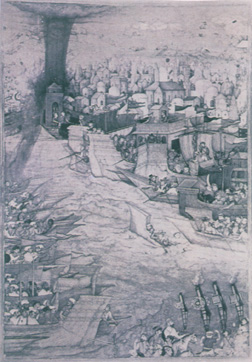
Plate IX: Leigh Ashton (note 9), pl. 138.
SELECT BIBLIOGRAPHY
1. Abul Fazl, Akbarnama, 3 vols., Biblioteca Indica (Bib. Indica), Calcutta, 1837-87.
2. Abdul Qadir Bada 'uni, MuntakhabTawarikh, vol. ii, Bib. Indica, Calcutta, 1864-9 (ed. Ali and Lees)
3. Nizamuddin Ahmad, Tabagat-i Akbari, vol. ii, Bib. Indica, Calcutta, 1931 (ed. B. De)
4. 'Abdul Hamid Lahori, Badshahnama, Bib. Indica, Calcuta, 1866-72.
5. Salih Kanbu, 'Amal-i Salih, vol. i, Bib. Indica, Calcutta, 1912 (ed. G. Yazdani).
6. Mir Turab Wali, Tarikh-i Gujarat, Bib. Indica, 1909. (ed. Sir E. Denison Ross)
7. Zainuddin, Tuhfat-al Mujahidin, University of Madras, 1942. (tr. from Arabic by M. H. Nainar).
8. T. W. Arnold and J. V. S. Wilkinson, The Library of Chester Beatty: Catalogue of the Indian Miniatures, 3 volumes, Bloomsbury, W. C., 1936.
9. Leigh Ashton, The Art of India and Pakistan, London, 1947.
10. A A. A. Ivanova, et al., Album of Indian and Persian Miniatures, XVI-XVIII Centuries, Akademi of Sciences, USSR, Institute of the Peoples of Asia, Moscow, 1962.
11. E. Maclagan, The Jesuits and the Great Mogul, London, 1932.
12. Ananda K. Coomaraswamy, Catalogue of the Indian Collections in the Museum of Fine Arts, Boston, Mass., 1930.
13. M. S. Commissariat, A History of Gujarat, vol. i, London, 1938.
14. Frederick C. Danvers, The Portuguese in India, 2 vols., London (reprint), 1966.
15. Stuart C. Welch, Imperial Mughal Painting, London, 1978.
16. Dalu Jones (ed.), A Mirror of Princes - the Mughals and the Medici, Marg Publications, Bombay, 1987.
17. F. R. Martin, The Miniature Painting and Painters of Persia, India and Turkey from the 8th to the 18th Century, vol. 2, London, 1912.
18. Ashok K. Das, Mughal Painting during Jahangir's Time, Calcutta, 1978.
19. Encyclopaedia of World Art, vol. X
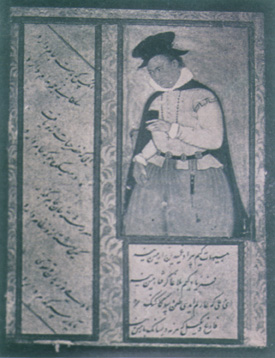
Plate X: Coomaraswamy (note 12), pl. XXVI, no. LVII,
* A. Jan Qaisar is currently employed as Professor of Social and Cultural History in the Centre of Advanced Study in the Department of History at Aligarh Muslim University in India. His special field of interest lies in the History of Technology and Mughal Paintings and in this respect he has attended numerous conferences all over the world and published a large quantity of articles.
start p. 317
end p.